Repurposing a Preformed Pond Liner to Create a Brush Pile
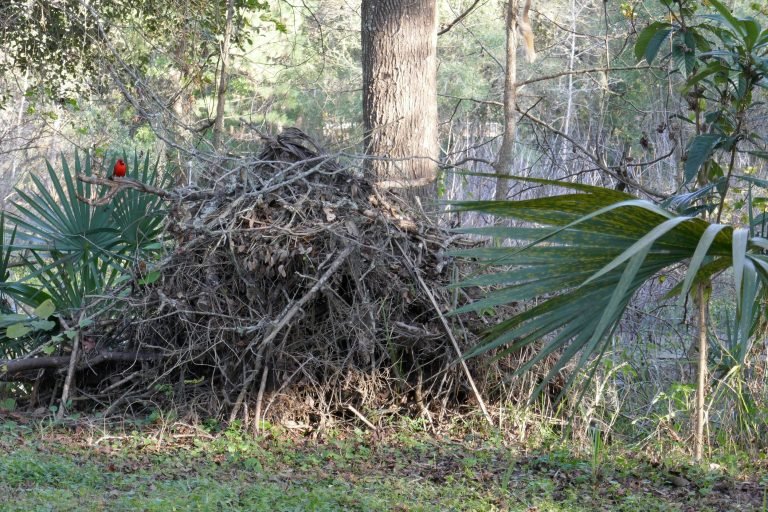
Many animals use brush piles and they are an excellent way to use up yard waste that might otherwise end up in the landfill or be burned.
I’ve gone one step further and incorporated an unused pond liner to give it a new lease on life and make a beefier brush pile.
Even if you’re lucky enough to have some natural areas, and plantings, on your property adding a brush pile or two will give the wildlife even more areas to inhabit. Brush piles are important because wildlife are losing their homes due to habitat loss at an alarming rate. Not to mention it’s just nice sharing your green space with other creatures.
Providing a place for the wildlife will keep them from trying to set up house underneath your home, decks, or out buildings as well.
You will find a vast array of wildlife moving into your brush piles. Wildlife use a brush pile from the top to the bottom, and inside and out, for all aspects of their daily lives. Songbirds, frogs, and lizards use the upper and outer portion of loose twigs to rest, hide from predators, and hunt for insects. Larger animals such as rabbits and raccoons use the bottom portion to make burrows and dens. Some wildlife such as snakes will use the brush pile as a hunting ground and may only be seen passing through once a day to hunt for food. A brush pile is kind of like having a wildlife two story apartment. You get inhabitants on the upper floor and inhabitants on the lower floor.
Limbs that touch the ground will begin to decay and you will be blessed with decomposers such as slugs, centipedes, millipedes and earthworms, which will enrich the soil, keep pest insects in check, and provide food for animals such as moles, and reptiles and amphibians.
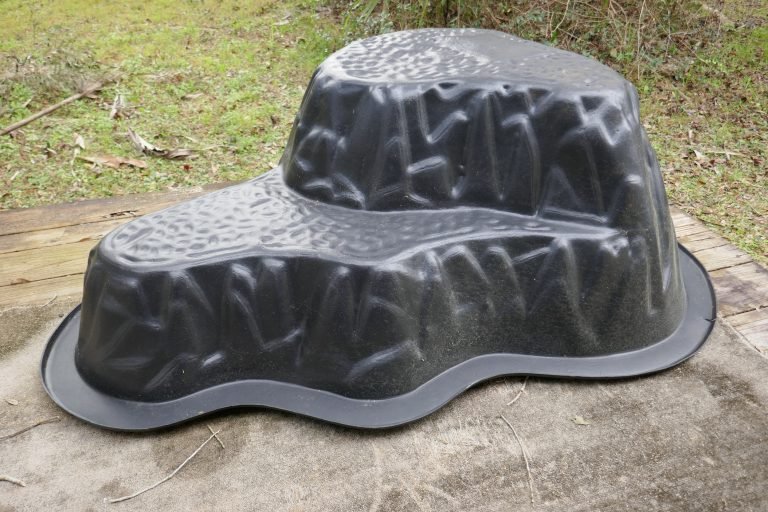
Ramping up your brush pile construction to repurpose an unused pond liner will provide a rain proof, super, brush pile.
Building a brush pile, for wildlife, usually starts with using large tree limbs, laid down in a crosshatched pattern, to create a strong, sound, base with areas for the animals to tunnel through. Creating the base in this manner provides large areas of rain proof cover and open areas where the animals can tunnel and personalize the tunnels to make them larger for sleeping chambers or as an entrance and exit.
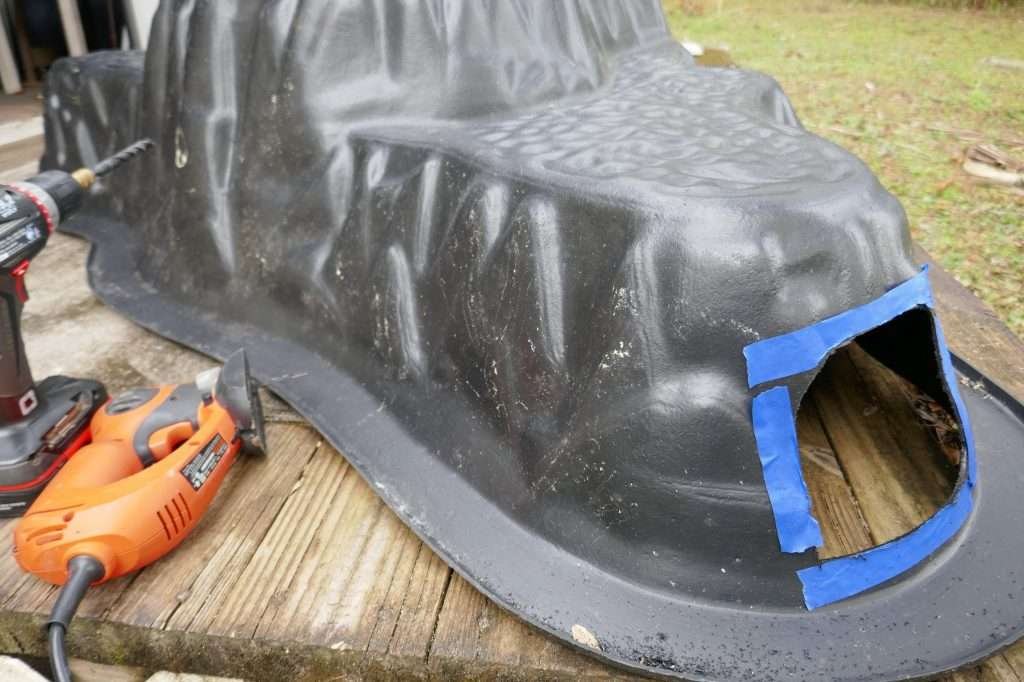
Animals will dig their own entrance and exit holes underneath the pond liner, but I decided to help them out a little by cutting holes into the liner for them.
I just used a small saber saw and a drill. Use a large drill bit to make a hole large enough for your saw blade to go into at the beginning of your opening design. Begin slowly, and go carefully, and cut your desired shape. It doesn’t have to be measured, or perfect, and can be done free hand or as intricate a design as you’d like.
Preformed pond liners are generally rather thick plastic and cut very easily.
I went ahead and cut two holes, one on each end, to make en entrance and exit, but one would certainly suffice. Actually be creative and make a bunny shaped hole if you feel like it. This is your creation so make it your own. Once it’s covered with brush no one will see it except the animal inhabitants, and who knows, maybe they would appreciate an entrance hole shaped like themselves.
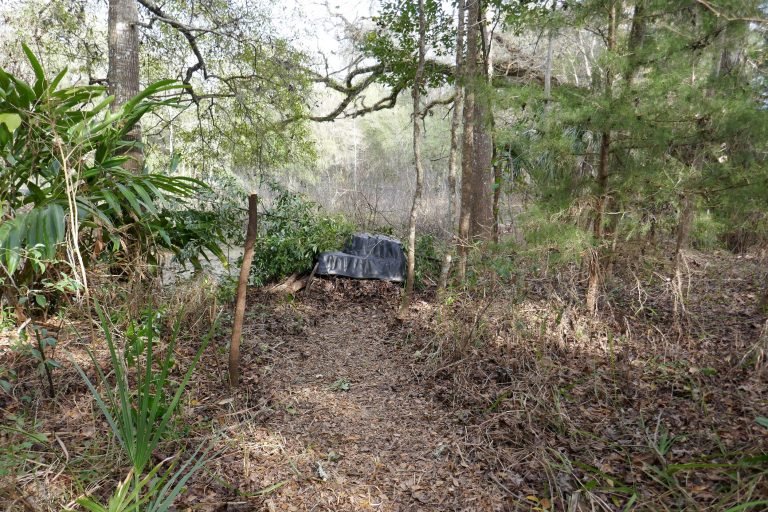
Once my entrance and exit holes were cut into the liner I placed it, upside down, onto an existing brush pile that had decayed and needed to have more brush added to it. I would have preferred to lay it flat on the ground in this instance, but worked with what I had. It ended up being just right when I got done.
Nothing special here but to just place the pond liner where you want it and begin to cover it with brush. It doesn’t need to be anchored to the ground unless you live in an area of high wind, and generally the weight of the added brush will be enough to keep it in place.
There is no need to use large, heavy, limbs because the pond liner works as the base and replaces the bottom half of the brush pile. I used small limbs and branches for mine, but you could certainly place larger pieces and whatever you have on hand. Trimmings from tree clippings, fallen twigs, moss, or anything along those lines will fit the bill.
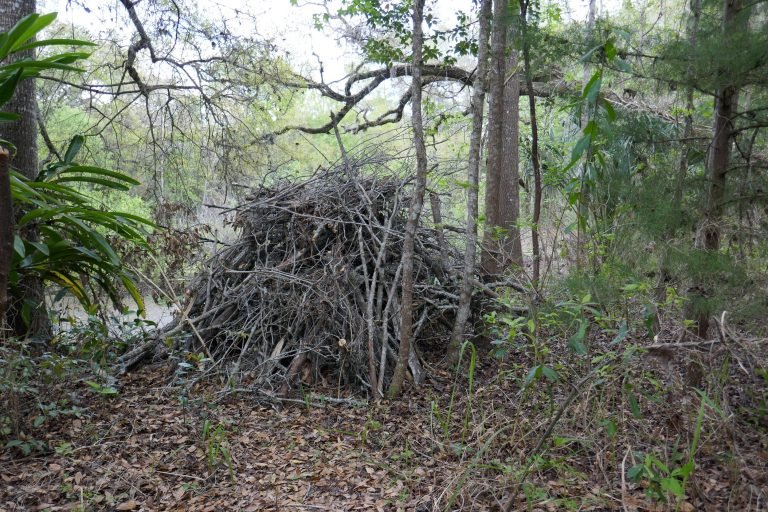
Job done!
My pond liner had sat unused for years. I originally had a lovely little pond with gold fish, water plants, and a biologic filter, but it proved to be a problem on so many levels that I removed it and stored it behind an outbuilding.
Using it for its original purpose was a fail for me. I had visions of a gorgeous pond right next to my patio full of adorable fish and frogs that I could admire and visit while drinking my morning coffee or just relaxing, but the dogs drank out of it and had to be treated for parasites constantly, the black racers came daily and ate every fish I introduced into it, the pump constantly had problems, the filtration system needed to be constantly cleaned of debris and it turned into a maintenance nightmare.
I am so glad that I finally found a good use for it.
To read more about using yard waste check out my other article – Recycle Your Yard Waste.
Check out Florida-Friendly Yard Recognition to see what you can do to get your yard certified as a “Florida Friendly Yard”.
If you already have a wildlife habitat you can get it certified with the National Wildlife Federation and get recognized for your achievement.
Enjoy your green space.
